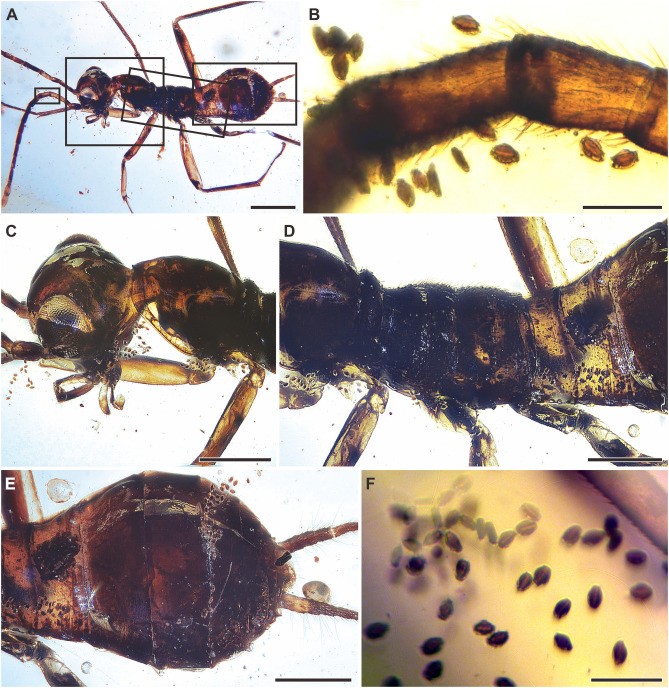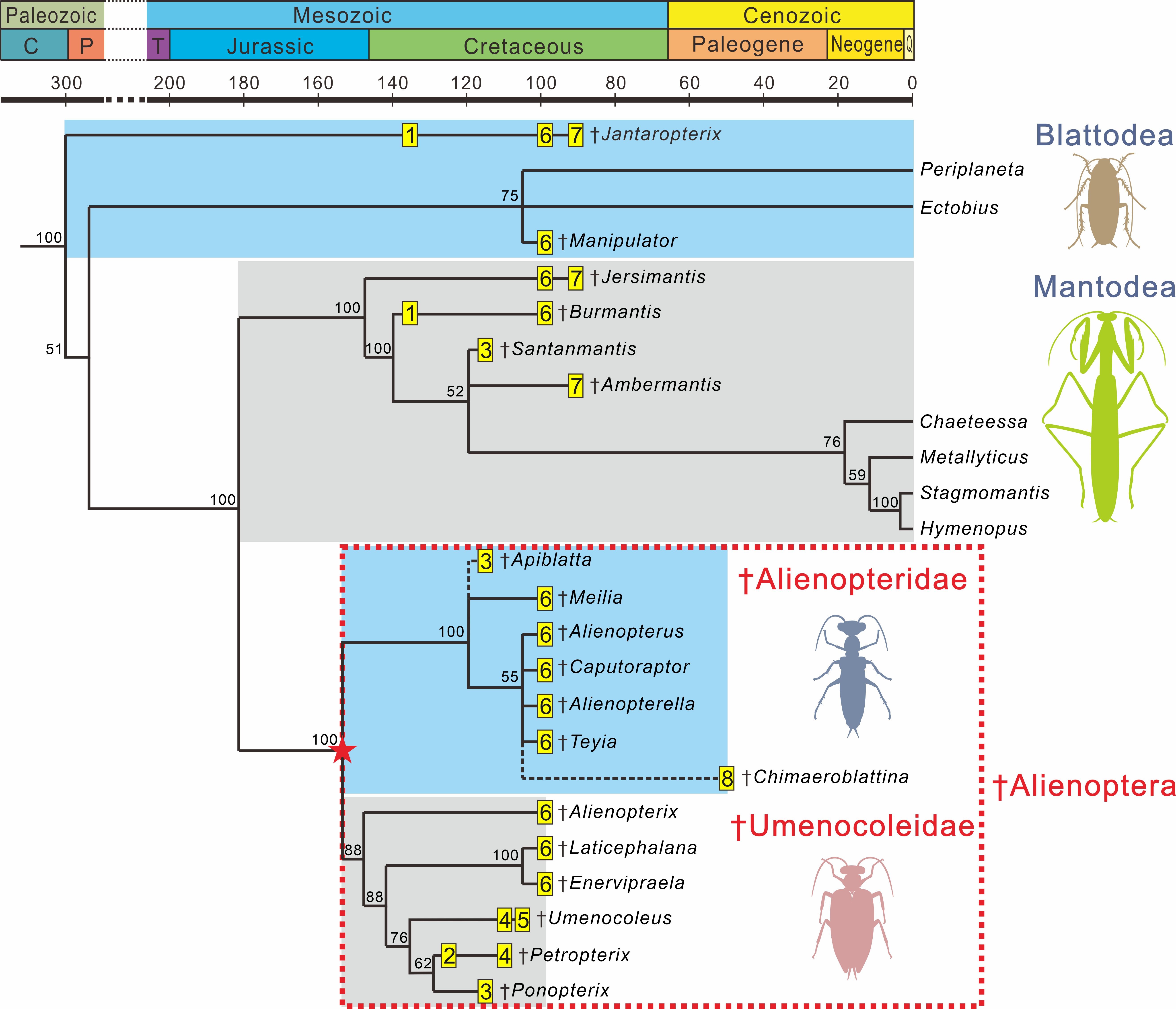Alienopteridae were originally proposed as a new insect order (Alienoptera) in 2016, and this family was considered as one of the most peculiar insects in Burmese amber. Firstly, Alienopteridae were only discovered from mid-Cretaceous Burmese amber, but later few specimens were also reported from the Lower Cretaceous Crato Formation of Brazil and the middle Eocene Green River Formation of the USA. However, the life history, systematic position, and taxonomic status of Alienopteridae (Alienoptera) have been much disputed since the group was established.
Recently, LUO Cihang, a postgraduate student, supervised by Prof. WANG Bo from the Nanjing Institute of Geology and Palaeontology, Chinese Academy of Sciences (NIGPAS), in collaboration with other scientists from NIGPAS, discovered many new specimens of Alienopteridae from the museum and/or Institute of China, Germany, USA and Slovakia.
This study was published in Earth-Science Reviews on Dec. 30, 2021.
The team used an array of different methods, i.e., optical microscopy, confocal laser scanning microscopy (CLSM), x-ray microcomputed tomography, geometric morphometric analysis and phylogenetic analysis to evaluate the morphology, life habits and evolutionary history of Alienopteridae.
"We discovered that one alienopterid nymph is laden with gymnosperm pollen grains," WANG Bo says. Therefore, by providing the first possible direct evidence of gymnosperm pollination by a fossil dictyopteran, researchers may confirm a previously unknown gymnosperm-insect association.
This is the only known fossil pollination example from the Polyneoptera, one of the major lineages of winged insects and indicated that some Mesozoic dictyopterans may have been important pollinators of gymnosperm.
The order Aethiocarenodea was erected using an isolated specimen from mid-Cretaceous Kachin amber and was considered as one of the most enigmatic insects in Burmese amber. This study is based on morphological observations and summaries of a large number of specimens, confirmed that Aethiocarenodea is actually a specialized type of alienopterid nymphs, and finally revised the systematic position of Aethiocarenodea.
The researchers also carried out a phylogenetic analysis based on a matrix with 56 characters and 39 terminals, which evaluated the phylogenetic placement and evolution history of Alienopteridae.
There have robust evidences that the Alienopteridae is a specialized taxon of Dictyoptera, sister to Umenocoleidae, and Alienopteridae alone should not be ranked as a separate order. Hence, the two families should be combined as clade Alienoptera and placed as sister to Mantodea. They probably arose before the J/K boundary and their common ancestor may have occurred in the Late Jurassic.
"We also reported an alienopterid nymph fell prey to a lacewing larva." WANG says, "these discoveries provide direct evidence for us to reconstruct the Cretaceous terrestrial ecosystem and further confirm that insects already evolved complex behaviors during the Cretaceous."
This research was supported by the Chinese Academy of Sciences, Ministry of Science and Technology of China and National Natural Science Foundation of China.
Reference: Luo Cihang, Beutel R.G., Engel M.S., Liang Kun, Li Liqin, Li Jiahao, Xu Chunpeng, Vr?ansky P., Jarzembowski E.A., Wang Bo, 2021. Life history and evolution of the enigmatic Cretaceous–Eocene Alienopteridae: A critical review. Earth-Science Reviews. https://doi.org/10.1016/j.earscirev.2021.103914.

alienopterid nymphs and gymnospermous pollen grains Monosulcites

Phylogeny of Alienopteridae (Image by NIGPAS)
Contact:
LIU Yun, Propagandist
Email: yunliu@nigpas.ac.cn
Nanjing Institute of Geology and Palaeontology, Chinese Academy of Sciences
Nanjing, Jiangsu 210008, China
